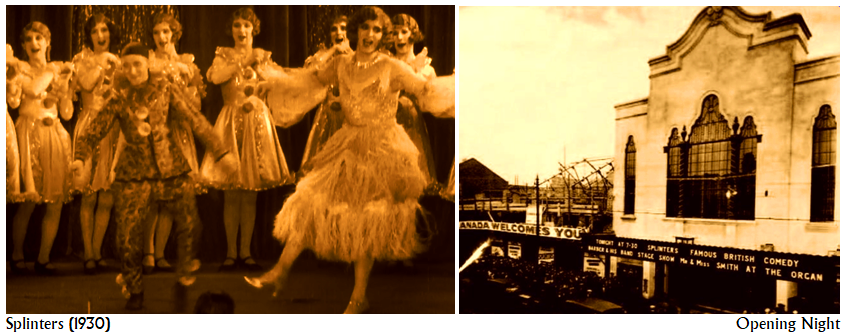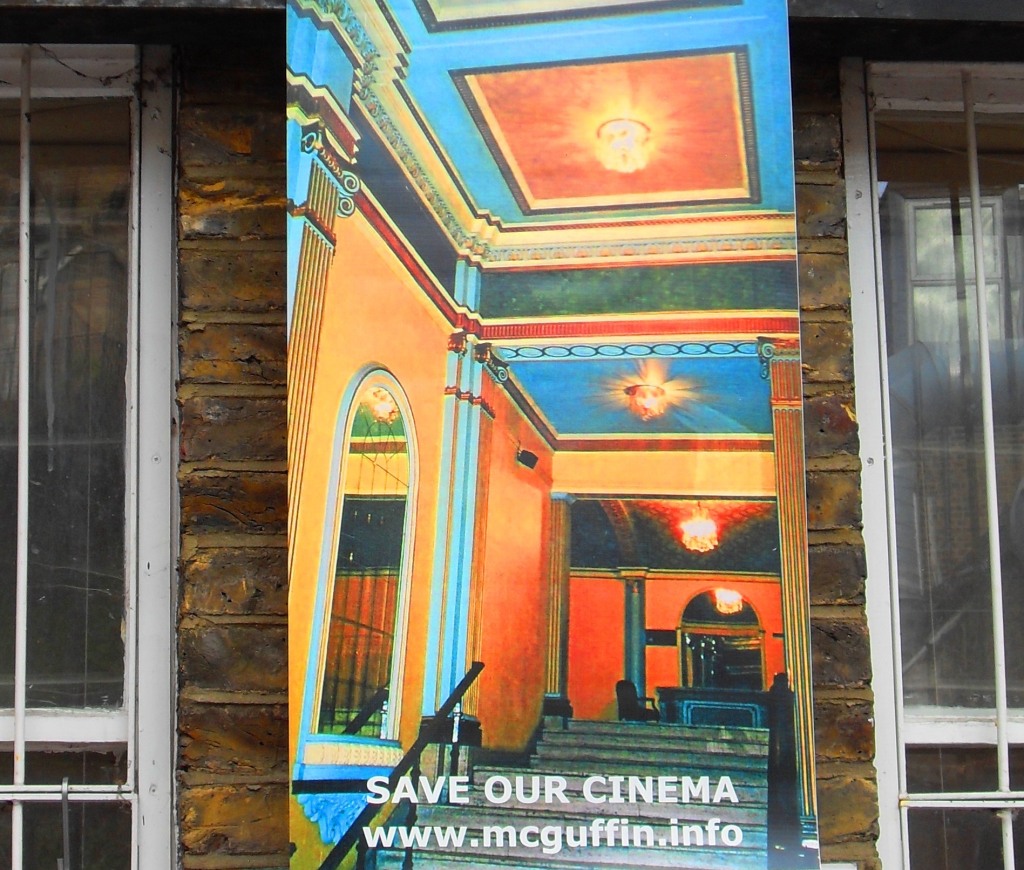EMD History and Gallery
“The EMD Cinema was built to promote happiness, culture and entertainment for the benefit of the whole community. I fully support the McGuffin campaign to save the cinema and share their wish to see it reopened as a flagship arts venue for east London.” Alain de Botton, author and philosopher.
Waltham Forest’s former EMD Cinema (now Soho Theatre Walthamstow) stands on a site which has provided entertainment and culture to local people for well over a century.
The original Victoria Hall opened during May 1887 to provide a venue for dances, concerts, meetings and plays. The site’s long association with the movies began when it played host to one of London’s first ever film shows in 1896, the year of cinema’s birth. The Victoria Hall is believed to have been a haunt of the young Alfred Hitchcock who lived in nearby Leytonstone. Hitchcock’s family were keen entertainment-lovers and it is inconceivable they would not have visited the area’s most popular venue.
The Victoria Hall was renamed the Victoria Picture Theatre when it was converted into the area’s first dedicated full time cinema in 1907. In 1930 the Victoria Picture Theatre was purchased by the showbiz moguls Sidney and Cecil Bernstein of Granada Theatres, who decided to reinvent the site as their first modern ‘Super Cinema’ – and London’s first Granada Cinema. Sidney Bernstein was a lifelong friend and collaborator of the adult Alfred Hitchcock with whom he would later form Transatlantic Pictures (a film company whose productions included Hitchcock’s ‘Rope’ and ‘Under Capricorn’). It may even have been Hitchcock’s familiarity with the Walthamstow venue which alerted Bernstein to the potential of the site.
The architect of the Bernstein’s new 2,697 seat Walthamstow cinema was Cecil Masey with flamboyant interior decorations by the world famous Russian director and designer Theodore Komisarjevsky. The cinema’s lavish interior was inspired by a trip to the grand Alhambra Palace in Spain, resulting in the Granada’s large foyer being designed in an elaborate 17th Century Baroque style with a marble floor and extravagant chandeliers while the main auditorium boasted colourful Moorish-inspired arches and grille-work. Sidney Bernstein insisted that the beautiful interior should be decorated with fresh flowers each day.
The cinema was built to present a mixture of films and live performances and was therefore equipped with an expensive purpose-built Christie cinema organ and first rate stage facilities.
Several days later than originally advertised, the Granada Walthamstow opened on 15 September 1930 at 7.30pm with a programme consisting of a stage show, live music by a 20-piece orchestra, a recital on the Christie organ and a film screening of the wartime comedy musical ‘Splinters’ starring Nelson Keys, Sydney Howard and Reg Stone.
Over the years the venue would play host to such entertainment legends as The Beatles, Johnny Cash, Duke Ellington, Count Basie, Jerry Lee Lewis, The Rolling Stones, The Kinks, Small Faces, Little Richard, Gene Vincent, The Walker Brothers, The Who, Chuck Berry, Buddy Holly and Roy Orbison.
Following the success of their new venture the Bernstein brothers would open more than 50 further venues around the country but the Walthamstow site remained amongst their most consistently profitable and the only one to survive into the 21st Century as a working cinema.
The Bernstein’s cinema chain proved to be so financially successful that the brothers were able to launch Granada Television in 1954, a channel which survives to this day.
The Walthamstow venue was remodelled as a more modest three-screen cinema in October 1973, reflecting the changing tastes of cinemagoers but still retaining all the architectural and decorative features for which it had become famous. For many years the Granada was the only British venue which retained an original Christie cinema organ in its intended setting which helped to secure the building’s reputation as a nationally important landmark for students and aficionados of motion picture history.
During the 1990s the venue changed hands several times and was variously known as the Walthamstow ABC and the Cannon Cinema as well as spending a brief spell under the ownership of Richard Branson’s Virgin empire.
Following a series of mergers amongst cinema companies in the late 1990s, the venue was eventually absorbed into the Odeon chain who soon found themselves with an excess of sites in the London area. As a result, Odeon began selling many of their cinema buildings.
In 2000 English Heritage awarded the cinema Grade 2*(star) Listed Building status in recognition of its outstanding architectural and cultural significance, placing it amongst the most important 8% of buildings in Britain.
Shortly afterwards, the venue was sold to businessman Mohan Sharma who renamed it the EMD Cinema. Unfortunately Odeon had sold the building with a restrictive agreement preventing the screening of English language films. This restrictive sales clause caused outrage amongst local people and led directly to the formation of the McGuffin Film Society to help restore the venue as a community-wide resource. In April 2001, Odeon management finally relented and the EMD Cinema was then able to screen any film and in any language.
Sadly, after 116 years as the area’s flagship site for arts and entertainment, the building closed its doors to the public in 2003 when it was purchased by a controversial Brazil-based religious organisation called the Universal Church of the Kingdom of God (UCKG). The McGuffin Film Society fought a relentless decade-long campaign to save the venue and eventually UCKG sold the site in 2014. Despite numerous offers from cinema operators over the years, UCKG chose to sell the EMD to a consortium hoping to redevelop the site for housing with a ‘pop-up’ pub in the former foyer. Fortunately this scheme proved to be financially unviable and the local authority then acquired the freehold as part of a new initiative to revive the venue in tandem with Soho Theatre.
A Short History of the Cinema by Bill Hodgson.


Leave a comment